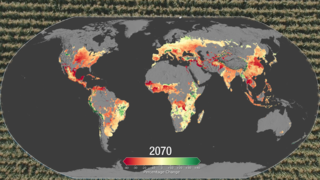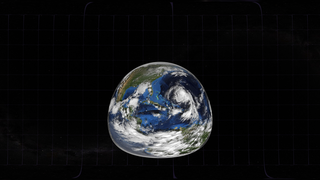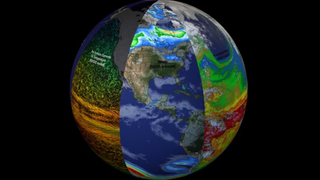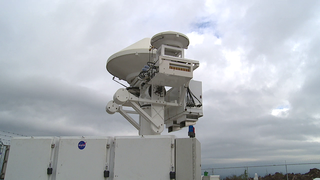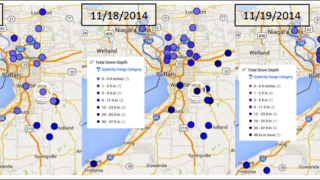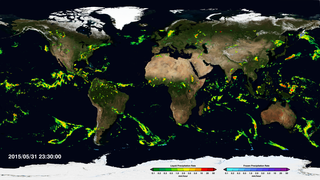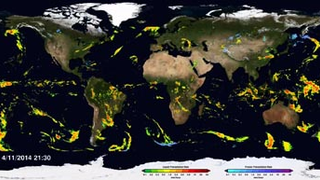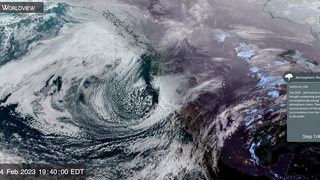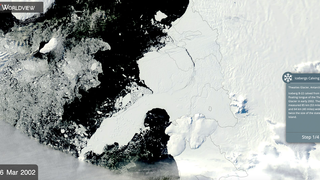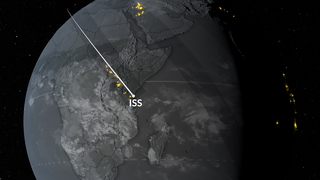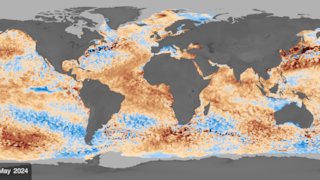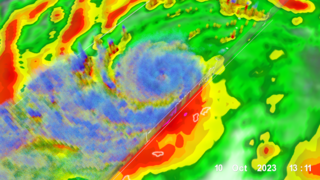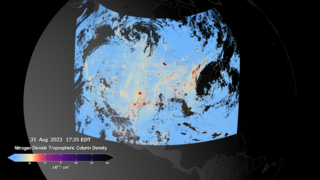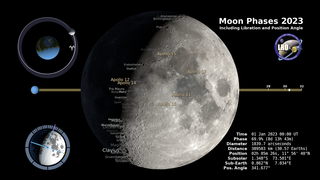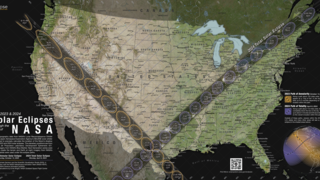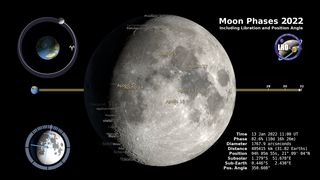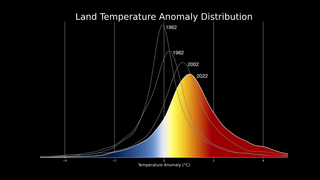Earth
ID: 4285
The Global Precipitation Measurement (GPM) mission produces NASA's most comprehensive global rain and snowfall product to date, called the Integrated Multi-satellite Retrievals for GPM (IMERG). It is computed using data from the GPM constellation of satellites — a network of international satellites that currently includes the GPM Core Observatory, GCOM-W1, NOAA-18, NOAA-19, DMSP F-16, DMSP F-17, DMSP F-18, Metop-A, and Metop-B. The global IMERG dataset provides precipitation rates for the entire world every 30 minutes. Although the process to create the combined dataset is intensive, the GPM team creates a preliminary, near-real-time dataset of precipitation within several hours of data acquisition. This visualization shows the most currently available precipitation data from IMERG, depicting how rain and snowstorms move around the planet. As scientists work to understand all the elements of Earth's climate and weather systems, and how they could change in the future, GPM provides a major step forward in providing comprehensive and consistent measurements of precipitation for scientists and a wide variety of user communities.


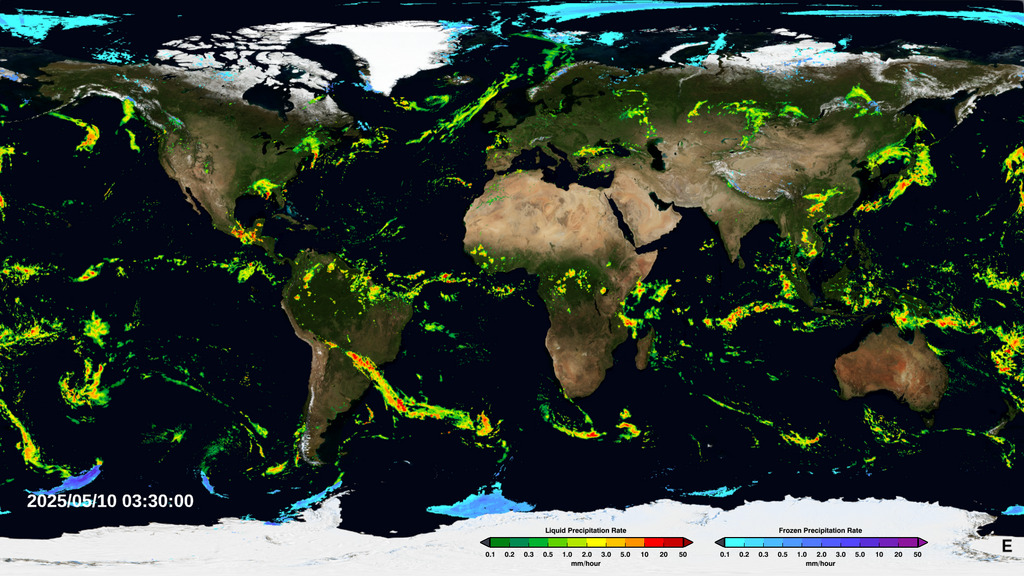
Near Real-Time Global Precipitation from the Global Precipitation Measurement Constellation



Used Elsewhere In
Related
Visualization Credits
Horace Mitchell (NASA/GSFC): Lead Animator
George Huffman (NASA/GSFC): Lead Scientist
Gail Skofronick Jackson (NASA/GSFC): Lead Scientist
Dalia B Kirschbaum (NASA/GSFC): Lead Scientist
Leann Johnson (Global Science and Technology, Inc.): Programmer
Ryan Fitzgibbons (USRA): Producer
George Huffman (NASA/GSFC): Lead Scientist
Gail Skofronick Jackson (NASA/GSFC): Lead Scientist
Dalia B Kirschbaum (NASA/GSFC): Lead Scientist
Leann Johnson (Global Science and Technology, Inc.): Programmer
Ryan Fitzgibbons (USRA): Producer
Please give credit for this item to:
NASA's Scientific Visualization Studio.
NASA's Scientific Visualization Studio.
Short URL to share this page:
https://svs.gsfc.nasa.gov/4285
Mission:
Global Precipitation Measurement (GPM)
Data Used:
Note: While we identify the data sets used in these visualizations, we do not store any further details nor the data sets themselves on our site.
Keywords:
DLESE >> Atmospheric science
SVS >> Global Precipitation Measurement
GCMD >> Earth Science >> Atmosphere >> Precipitation >> Precipitation Rate
GCMD >> Earth Science >> Atmosphere >> Precipitation >> Rain
SVS >> Hyperwall
NASA Science >> Earth
NASA Earth Science Focus Areas >> Weather and Atmospheric Dynamics
SVS >> Real-time
SVS >> Realtime
SVS >> Updated
SVS >> Up-to-date
GCMD keywords can be found on the Internet with the following citation: Olsen, L.M., G. Major, K. Shein, J. Scialdone, S. Ritz, T. Stevens, M. Morahan, A. Aleman, R. Vogel, S. Leicester, H. Weir, M. Meaux, S. Grebas, C.Solomon, M. Holland, T. Northcutt, R. A. Restrepo, R. Bilodeau, 2013. NASA/Global Change Master Directory (GCMD) Earth Science Keywords. Version 8.0.0.0.0
https://svs.gsfc.nasa.gov/4285
Mission:
Global Precipitation Measurement (GPM)
Data Used:
also referred to as: IMERG
Data Compilation - NASA/GSFCKeywords:
DLESE >> Atmospheric science
SVS >> Global Precipitation Measurement
GCMD >> Earth Science >> Atmosphere >> Precipitation >> Precipitation Rate
GCMD >> Earth Science >> Atmosphere >> Precipitation >> Rain
SVS >> Hyperwall
NASA Science >> Earth
NASA Earth Science Focus Areas >> Weather and Atmospheric Dynamics
SVS >> Real-time
SVS >> Realtime
SVS >> Updated
SVS >> Up-to-date
GCMD keywords can be found on the Internet with the following citation: Olsen, L.M., G. Major, K. Shein, J. Scialdone, S. Ritz, T. Stevens, M. Morahan, A. Aleman, R. Vogel, S. Leicester, H. Weir, M. Meaux, S. Grebas, C.Solomon, M. Holland, T. Northcutt, R. A. Restrepo, R. Bilodeau, 2013. NASA/Global Change Master Directory (GCMD) Earth Science Keywords. Version 8.0.0.0.0
